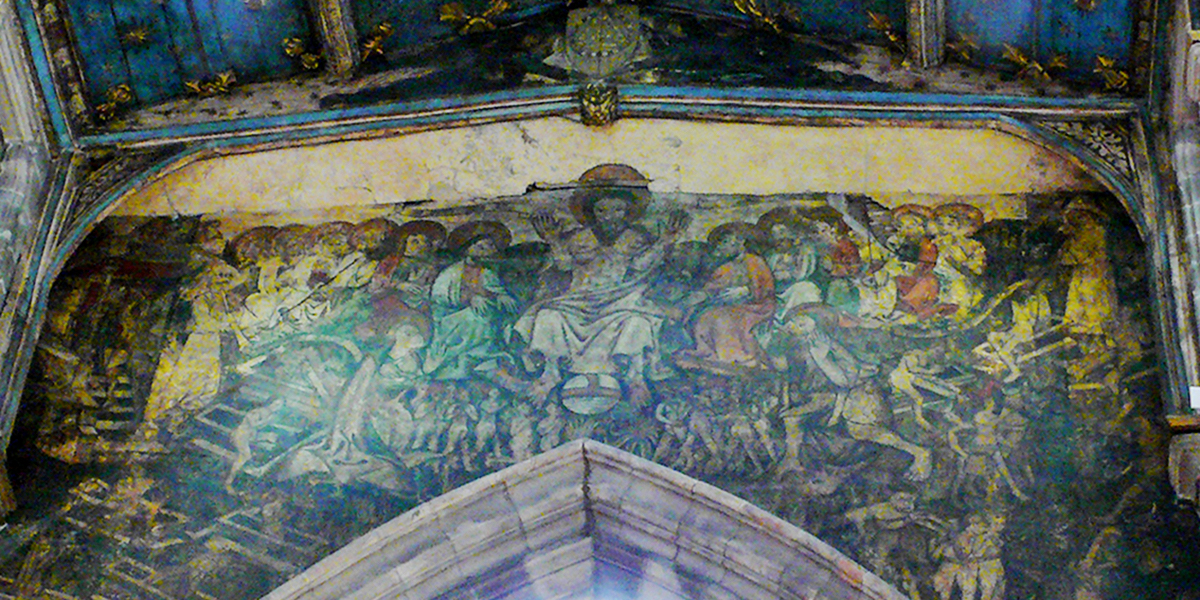It took two fires, two restorations, and half a millennium for this masterpiece to go on full display.
Lenten Campaign 2025
This content is free of charge, as are all our articles.
Support us with a donation that is tax-deductible and enable us to continue to reach millions of readers.
In Coventry England’s Holy Trinity Church there is a masterpiece of medieval painting known as a “Doom.” Doom paintings are traditional depictions of Christ ushering souls to heaven and hell on the day of the Last Judgment (doom is the Old English word for “judgment”). They were particularly popular in the Middle Ages, arising in most prevalence around the time of Dante’s Divine Comedy.
The Doom painting in the 13th-century Coventry church was painted by an unknown artist, and it was hidden from view for the majority of its existence. Atlas Obscura explains that it was created in the 15th century, but the Doom was covered with whitewash during the English Reformation, because church ornamentation was viewed as too “Papist” (Roman Catholic).
The painting was promptly forgotten for nearly 400 years, until a 19th-century fire burned away some of the whitewash and revealed the medieval artwork beneath. Once the painting was revealed, the church began a restoration process, but unfortunately the varnish applied to protect the restored piece was the incorrect material.
The painting soon became obscured once more by the darkening varnish, and it wasn’t until the 1980s that it was discovered again, coincidentally also after a fire burned away some of the blackened varnish. Yet another restoration effort was conducted, which was completed in 2003. Now the painting is viewable by all who visit the historic English church.
The Coventry Doom is a wonderful example of fine medieval art. The figures, drawn with an expert hand, depict those who have achieved salvation on Jesus’ right side, while on his left are those who have been damned to hell. Images include Christ in the center, seated above an orb. A party of saints surround Jesus, along with a couple of angels playing trumpets. To his right people rise from their graves to join Christ, while to the left demonic figures usher the sinners away from Christ.

The medieval Doom paintings were meant as an educational warning to the people. They were commonly situated at the rear wall of the church, so that parishioners would see it as they leave. It was meant to be a deterrent against sin and to remind the faithful that the choices they made when they left church would ultimately decide their fate in the afterlife.








